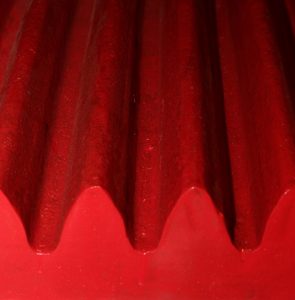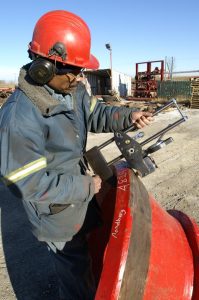Manganese – Is More Better?

Crusher wear parts are predominantly sold by their metal specification, but what does this mean?
These are wear parts, so let’s start there, what is wear? Wear can be defined as a progressive loss of material from a surface. In rock crushing, wear comes mostly from impact and abrasion. Impact wear is the repetitive exposure to dynamic contact from a solid body and abrasion wear is due to hard particles that are forced against and move along the solid surface.

The manganese alloy steel used for jaw and cone crusher liners was first developed in the late 1800’s by Sir Robert Hadfied. Hadfield’s alloy (sometimes referred to as Hadfield manganese) exhibits both high hardness and toughness, properties that were not found in carbon steels at the time.
Hardness, Toughness and Wear
Hardness is the ability of the liner to with stand indent under pressure and impact. Toughness is ability to absorb energy. In basic terms, this means that a crusher liner has to be able to handle the impact from the crusher hitting and compressing the rock for fracture, as well as the abrasion from the rock moving along the crushing surface as it progresses through the crusher.
Hadfield manganese, with both high hardness and toughness, will also work harden under impact. Work hardening happens when the liners are subjected to impact stress (such as in a crusher). The slight surface deformations harden the liner significantly, creating a skin that can be more than 100% harder than the hardness of the liner supplied from the foundry.

The hardness of manganese alloy can be tested using the Brinell method (BHN). This test places a 10mm tungsten carbide ball is placed on the surface of the casting and a 3000kg pressure is applied. The ball creates an indent on the surface of the casting and the diameter of this indentation is used to determine the hardness
Toughness, or ductility, is the other property of manganese that works for crushing. Toughness is the ability of the liner to bend and move to resist breakage. This property means that a good manganese liner will warp or distort (at the microscopic level) and flow instead of cracking and breaking when under high strain. This can be seen on the discharge side of work bowl liners. In some cases, you can see the flowed manganese curling around off the bottom lip.
These properties make the manganese alloy extremely resilient, and the liners can take a lot strain before they become worn out. Any cracking or holes that appear in liners prematurely can usually be attributed to manufacturing errors.
Manganese wear parts are sold in 3 common grades, 14% (Hadfield manganese), 18% and 21+% grades. 14% manganese has been used in crushing around the world for over 100 years and is a very reliable material for crusher liners. 14% manganese is supplied from the foundry with a hardness of approx 200 Brinel (HB), and when crushing rock with a high compressive strength (hard rock), will work harden to 450-500HB.
18% and 21+% manganese liners can offer slightly more abrasion resistance than 14% in brand new liners and they are supplied from the foundry around 220-250HB. Work hardening can increase this to a hardness in the range of 450-500HB, the same as 14% manganese. The higher manganese content becomes more important when crushing rock with low compressive strength (softer rock) or when there is a high proportion of silica or other abrasive materials. These types of materials abrade away the surface of the liners before they can produce the work hardened skin. Trials have shown that in very high silica content material, pushing the manganese content even higher (24%) can extend wear life significantly. Conversely, other trials have shown that using these higher manganese alloys in hard rock applications has no significant advantage over 14% manganese, as both alloys work harden to the same level.
The majority of manganese crusher liners hardness properties come from the ability of the alloy to work harden, not from the % of manganese in the alloy. If the product being crushed has a high compressive strength, as it does in most hard rock quarries, the manganese will work harden well above the liners supplied hardness. 14% manganese has the added benefit of being cheaper to produce. This means that it can reduce cost per ton even further for a hard rock quarry.
Categories
- Foothills are certified “safe, efficient and effective” as we achieve our ISO9001 Certification and our COR Certification
- Globally recognised as a leader in the manufacture and supply of castings and fabrications that are unsurpassed in quality and integrity.
- Our evolution from simple, small castings and forgings into global large scale high performance castings and fabrications
- Why do our wear parts outlast the competition?
- Technology and Experience makes Foothills the leaders in their field